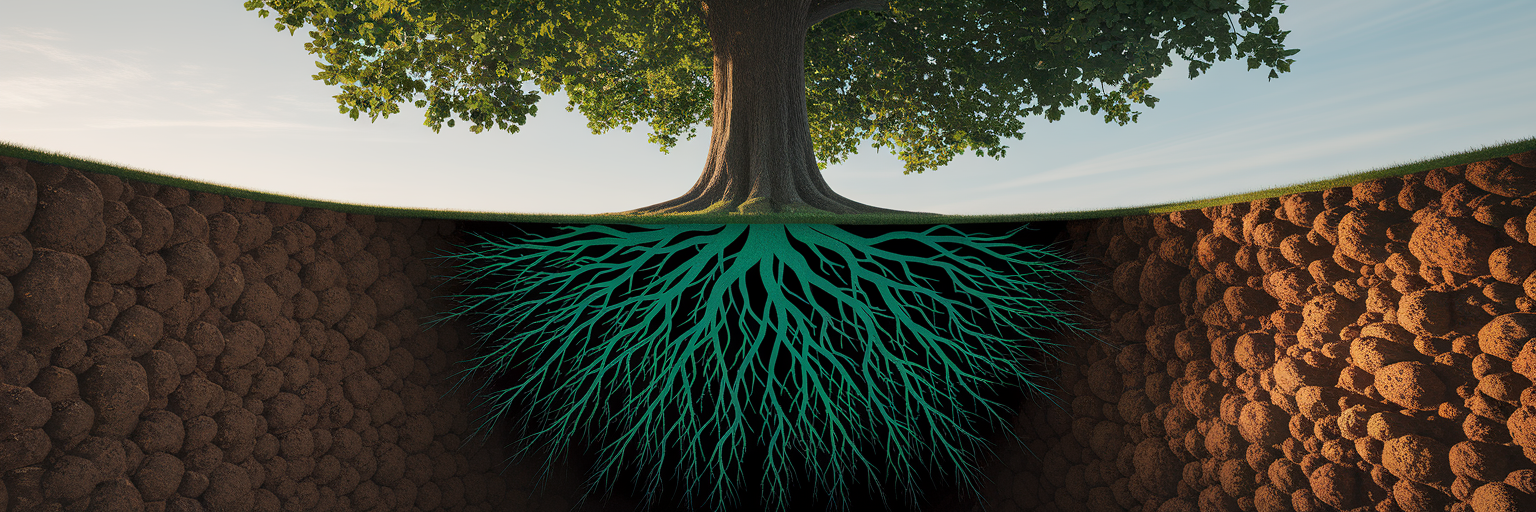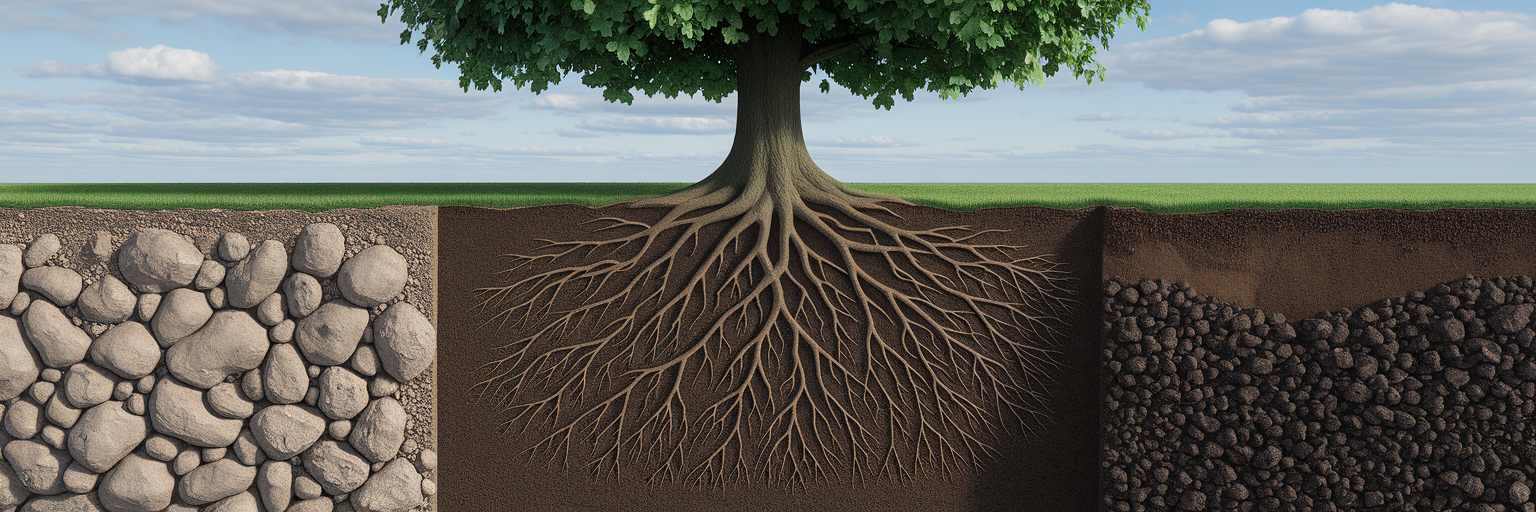The Unique Groundwork for San Antonio Trees
The health of a tree is often decided by what happens completely out of sight, deep in the soil. Here in San Antonio, much of the region sits on a foundation of limestone bedrock. This geological feature is the primary reason our soil is distinctly alkaline, meaning it has a high pH. While it may seem like a minor detail, this alkalinity creates a significant challenge for many trees.
This high pH environment can cause what arborists call ‘nutrient lockout’. In simple terms, essential minerals like iron are physically present in the ground, but they are chemically bound in a form that tree roots cannot absorb. The tree is essentially starving in a pantry full of food it cannot open. This invisible chemical struggle is the root cause of many issues affecting tree health San Antonio landscapes face, long before any visible signs of stress appear.
Identifying Your Property’s Soil Profile
Beyond the underlying chemistry, the physical texture of the ground plays a huge role in how your trees access water and oxygen. The San Antonio soil types generally fall into three main profiles, and knowing which one you have is the first step toward effective tree care. Many residents are familiar with the heavy, sticky clay often called ‘gumbo’. This soil holds onto water and nutrients but can become so dense and compacted that it suffocates roots by cutting off their oxygen supply.
On the other end of the spectrum is sandy loam. Its gritty texture allows for excellent drainage, but it struggles to retain moisture and nutrients, which can wash away too quickly. Clay loam offers a more balanced profile, but it can still become compacted over time. Identifying your soil is critical because the strategy for a tree in heavy clay is completely different from one in fast draining sand. Understanding these foundational differences is key to proper tree care, and you can explore more general tips on our blog.
| Soil Type | Key Characteristics | Challenges for Trees |
|---|---|---|
| Heavy Clay (‘Gumbo’) | Dense, poor drainage, high nutrient retention | Root suffocation from lack of oxygen, waterlogging, severe compaction when dry |
| Clay Loam | Balanced mix of clay, silt, and sand | Good moisture and nutrient retention, but can still become compacted |
| Sandy Loam | Gritty texture, excellent drainage, low nutrient retention | Dries out quickly, requires frequent watering, nutrient leaching |
Recognising Tree Stress Signals from Poor Soil
Once you understand your soil’s profile, you can learn to read the distress signals your trees send when they are struggling. The most common symptom in our area is a direct result of the high pH soil we discussed earlier. This condition is known as iron chlorosis in trees, and it has a very distinct look: leaves turn a pale yellow while the veins remain a prominent dark green. It’s a clear sign that the tree is unable to access the iron it needs to produce chlorophyll.
This condition is widespread across our region, as noted by Garden Style San Antonio, due to the prevalence of limestone based soils. But iron chlorosis is not the only sign. Keep an eye out for other indicators of soil related stress:
- A sparse or thinning canopy that you can easily see through.
- New twigs and leaves that appear stunted or smaller than in previous years.
- Branches at the top of the tree dying back.
Homeowners often mistake these symptoms for pest or disease problems. While these signs can point to the soil, it is also wise to rule out other causes, such as common tree insect infestations.
Actionable Steps for Enhancing Your Soil
Seeing these signs of stress does not mean your tree is doomed. There are practical, effective steps you can take to improve the soil and give your trees a fighting chance. This is where you can directly influence the health of your landscape.
- Get a Professional Soil Test: Before adding anything, get precise data. A professional test will confirm your soil’s pH and identify specific nutrient deficiencies, taking the guesswork out of the equation.
- Amend with Organic Compost: This is the single most effective tip for how to improve clay soil for trees and sandy soils alike. For heavy clay, organic matter breaks up the dense particles, improving drainage and aeration. For sandy soil, it acts like a sponge, helping retain crucial moisture and nutrients.
- Apply Mulch Correctly: A layer of organic mulch, about two to four inches deep, works wonders. It helps retain soil moisture, regulates temperature, and suppresses weeds. Crucially, always keep mulch a few inches away from the tree’s trunk to prevent rot and disease.
- Water with Purpose: Your watering technique should match your soil type. Clay soils need slow, deep watering sessions less frequently to allow moisture to penetrate without running off. Sandy soils need more frequent, shorter watering to compensate for rapid drainage. For clay soils, this means watering slowly and deeply, a process that can be optimized by implementing an effective tree watering system.
These steps are fundamental for maintaining the health of the trees on your property, a core part of our residential services.
When to Seek Professional Arborist Care
While the hands on steps above can make a significant difference, some soil problems are too advanced for DIY solutions. Severe nutrient deficiencies or years of heavy compaction may require specialized intervention. This is when professional tree care services San Antonio arborists provide become essential.
Treatments like deep root fertilization can deliver nutrients directly to the root zone, bypassing the nutrient lockout caused by alkaline soil. Likewise, soil aeration can relieve severe compaction in heavy clay, allowing vital oxygen to reach the roots again. For a comprehensive diagnosis and a tailored treatment plan, the best course of action is to consult with our certified arborists. Contact us today to schedule a consultation and create a long term health plan for your valuable trees.






